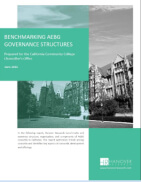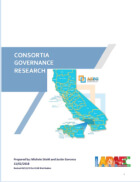CAEP ONBOARDING TOOL
Effective Consortium Management
Key to successful implementation of the CAEP is effective leadership. Regional consortia rely on strong leaders to guide the planning and implementation process which requires the careful coordination of many partners across several systems including K12 adult schools and community colleges as well as the state’s workforce development system and other partners such as libraries and local non-profit community based organizations. This section provides guidance and tools for consortium leaders to learn from their peers and as well as established best best practices for organizational management.
<< Back to Onboarding Home PageLeadership and Community Building
These are a variety of resources including webinars and reports relating to leadership, community building and everyday operations. CAEP TAP continues to provide trainings and webinars related to this topic as well as presentations at CAEP conferences or other adult education events so be on the lookout for upcoming opportunities on the CAEP Event Page.
Webinars:
-
Leveraging AEBG to Improve Community Partnerships
-
Charting a Path to Equity: A Leader’s Role
-
Getting the Most Out of Leveraging Resources
-
Community Asset Mapping
-
Google: Innovative Collaboration Tools for CAEP Consortia
-
Interest Based Decision Making
-
How to Run a Consortium
- Recording Coming Soon
-
AEBG Consortium Level Administrative Oversight
-
Google: Innovative Collaboration Tips and Ideas for CAEP Consortia
Properly Noticed Public Meetings
As described in the Education Code consortium decision making procedures must be specified by a consortium and meet the following requirements: “a decision is considered at an open, properly noticed public meeting of the consortium at which members of the public may comment and the consortium has provided the public with adequate notice of a proposed decision and considered any comments submitted by members of the public, and any comments submitted by members of the public have been distributed publicly.” The Brown Act guides the requirements for local legislative bodies’ properly noticed, public meetings in California. The Bagley-Keene Act governs all "state" boards and commissions. It generally requires these bodies to publicly notice their meetings, prepare agendas, accept public testimony and conduct their meetings in public unless specifically authorized to meet in closed session. See below for resources related to the Brown Act and Bagley-Keene Act.
- California Attorney General’s Guide to the Brown Act: Open Meetings for Local Legislative Bodies
- The Brown Act: California Government Code 54950-54963
- AB104 Alignment with the Brown Act
- California Attorney General’s Handy Guide to the Bagley-Keene Open Meeting Act
- Bagley-Keene Open Meeting Act Government Code 11120-11132
The CAEP Practices with Promise site is a valuable resource to learn from your peers about the work being done across the state. This showcase highlights innovative practices in place on a regional level to expand and improve adult education in our state, as well as stories of personal triumph that illustrate the powerful impact of CAEP. Use this to learn about what others are doing and to share your successes with others.
Consortium Governance
While the legislation clearly lays out some requirements for consortia governance, it largely leaves open the structure for daily operations open. This has resulted in a variety of effective governance structures. Here we provide you information on how other regions structure themselves.
Benchmarking Consortium Governance Structures
In this report, Hanover Research (Hanover) benchmarks and examines the governance activities of 16 of the 71 CAEP Consortia. This report analyzes the structure, communication practices, decision-making models, community need, alignment of partnerships, and evaluation methods of these consortia.
CAEP Office Survey on Governance Structure
In June 2019, the CAEP Office issued a survey to regions regarding their governance structure. This report compiles the information from that survey. Use this report to learn more about how others are managing their regional work. We’ve included the results from each region so you know who to contact to learn more.
LARAEC Consortia Governance Research
This study was conducted by the Los Angeles Regional Adult Education Consortium to review governance structures of consortia of similar size or demographics to their region in preparation for their 3-year plan. The study includes in-depth research on how other regions structure consortium management.
CCAE and ACCE CAEP Governance Training Webinar Coming Soon
Consortium By-Laws
In 2019, the CAEP Office will be required to review and approve consortium governance structure and by-laws. More guidance is coming toon relating to this requirement. Below is a link to some example consortium by-laws from regions around the state.
Example Consortium By-laws





